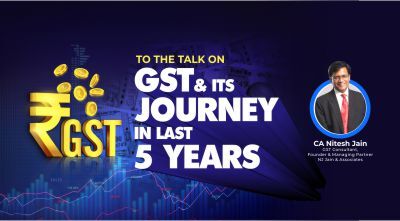


The event was held at AMA, Ahmedabad, where we delved into the transformative journey of Goods and Services Tax (GST) in India over the past five years. It was an insightful exploration of GST’s history, promises made, the ground reality, and a glimpse into the future.
The Goods and Services Tax, introduced in India on July 1, 2017, marked a significant shift in the country’s taxation landscape. It aimed to streamline indirect taxes, creating a unified tax structure and fostering economic growth. As we reflect on the last five years, we not only covered the chronological history but also discussed the promises that accompanied its inception.
Before GST came into play, managing taxes in India was like solving a complex puzzle. It was challenging, and there were difficulties in the way taxes were handled. The need for change became evident, leading to the introduction of GST. Think of it as putting together the pieces of a puzzle to understand how and why GST became a part of India’s tax system.
When GST was introduced, there were promises made that aimed to bring about positive changes. The vision was to simplify the tax system and boost economic development. It was like setting a goal to make things easier and better for everyone involved. We anticipated benefits not just for businesses but also for consumers – a system that streamlined processes and offered advantages for all.

After GST was put into action, businesses faced challenges as they adjusted to the new tax rules. It was like adapting to a new way of doing things. The real-world impact of GST on various sectors of the economy became apparent. This led to discussions on how it affected businesses and the larger economic landscape, providing a detailed understanding of the changes.
Looking ahead, we now have the opportunity to shape the future of GST in India. By learning from the past five years, we can explore potential improvements and changes. It’s like planning for the future by considering what worked well and what can be enhanced. Engaging in conversations about how GST might evolve helps ensure that the tax system aligns better with the dynamic needs of the Indian economy, creating a strong and responsive foundation for years to come.

This event provided a platform for participants to engage in meaningful discussions, share experiences, and contribute to the ongoing dialogue surrounding GST in India. If you missed the event, stay tuned for future opportunities to connect with experts, policymakers, and industry leaders.
As we navigate the complexities of GST, let’s collectively chart a course toward a more robust and efficient taxation system for India. Stay informed, stay engaged, and stay tuned for more insights on the transformative journey of GST.
